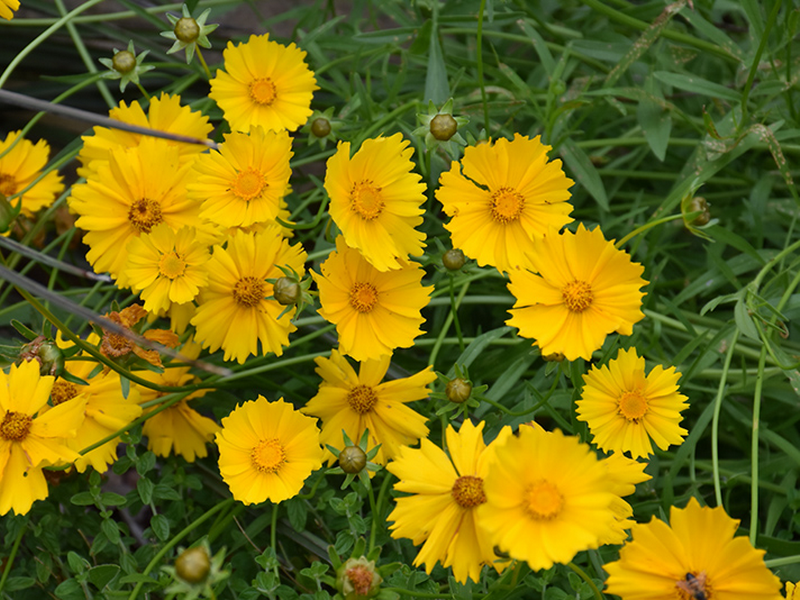Lance-Leaf Coreopsis
Coreopsis lanceolata
Click here to download a PDF of this plant information page (for printing).

Sun Exposure: Full Sun, Part Sun
Season of Interest: Spring, Summer
Bloom Time: May - July
Bloom Color: Yellow, Gold, Orange
Height: 28 to 36 in.
Spread: 24 in.
Spacing: 30 in.
Water Needs: Average
Maintenance: Very little
Soil Type: Loam, Sandy, Clay, Rocky
Soil pH: Acidic, Neutral
Soil Drainage: Well drained
Pests: None
Diseases: None
Wildlife: Bees, Buterflies

Description:
Lance-leaf coreopsis, Coreopsis lanceolata, is a wildflower native to the southeastern United States that has become a popular garden plant. The solitary daisy-like golden yellow flowers emerge from slender, erect stems. The narrow, hairy, lance-shaped leaves (which gave this species its name) are clustered near the base of the plant. It blooms in from spring through mid-summer and its nectar and pollen attract a wide range of beneficial native insects, including long-tongued bees, short-tongued bees, wasps, flies, butterflies, skippers, day-flying moths, and beetles. For more information see:
plants.ces.ncsu.edu/plants/coreopsis-lanceolata
Care and Growing Tips:
While all coreopsis species require very little care, lance-leaf coreopsis is especially easy to care for. You don't have to worry about drought and deer because it is resistant to both. The plant can look a little unkempt later in the season so cutting it back keeps things tidy and prevents it from reseeding, which Coreopsis lanceolata does freely (but because it's a native plant, this is not considered invasive). The only other routine care that is required is division every two to three years to maintain the vigor of the plant.
Coreopsis lanceolata should get full sun to thrive. Lack of light leads to scraggly growth and reduced bloom. The plant is very adaptable, as long as the soil has good drainage. It can grow in dry soil as well as shallow, rocky, and in extremely poor soils. Recently transplanted plants should be watered until they are established. Once you know it's established, you don't need to give Coreopsis lanceolata extra water even in drought conditions. As a plant native to the southeastern United States, Coreopsis lanceolata is tolerant of heat and humidity and it is also winter-hardy to USDA zone 4a. Unless you planted Coreopsis lanceolata in extremely nutrient-deprived soil, you don't need to fertilize it. It grows well in poor soils.